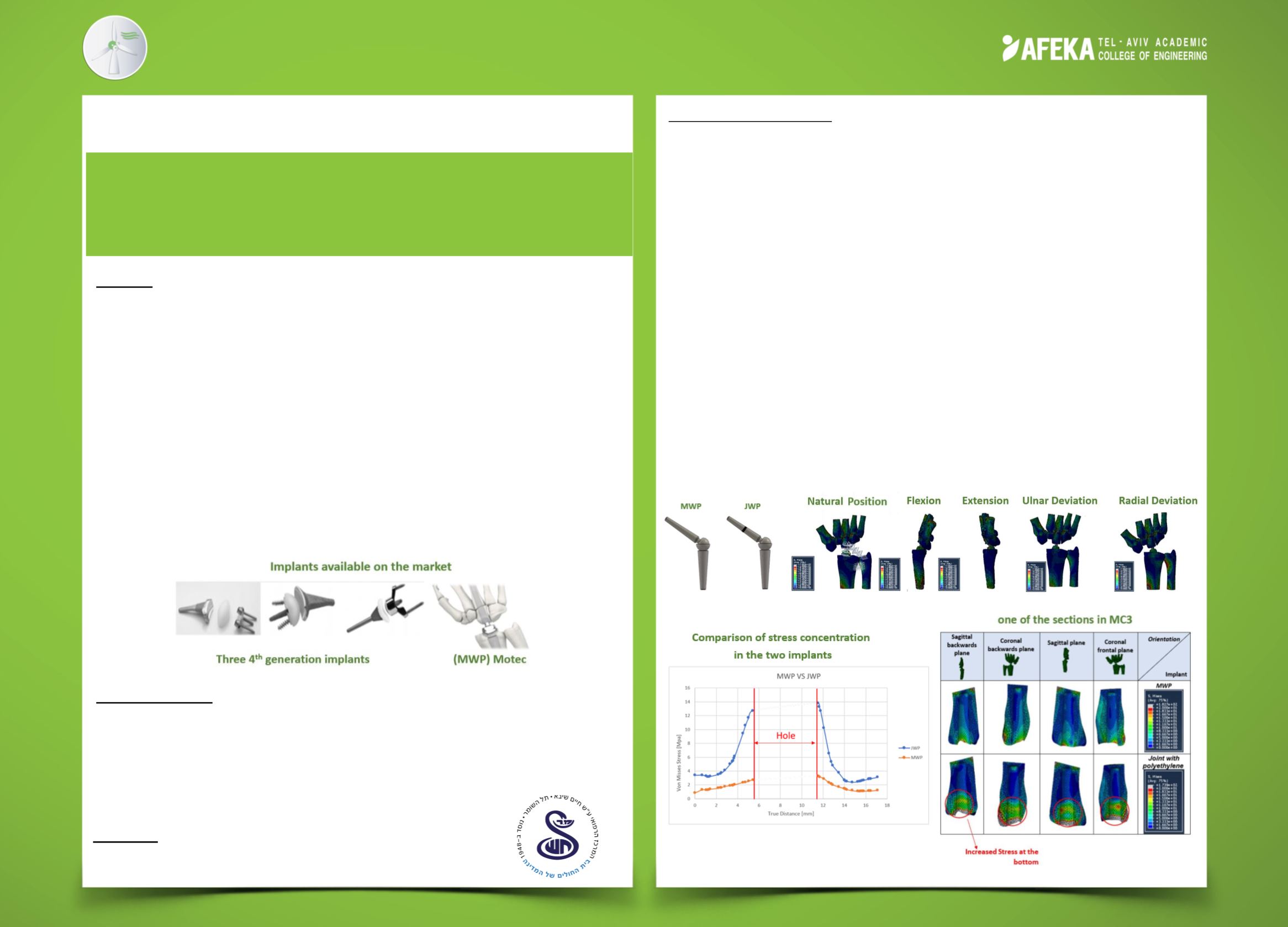

Wrist Implant
Abstract
This project is a research project that directly continues three previous ones that were
conducted by research groups in past classes.
The goal of this study is to solve an existing problem in the hand implants market,
which currently does not provide a satisfactory solution. The most common wrist
problems are luxation, fractures, and arthritis.
These problems often result from overexertion, incorrect use of the joint, and external
traumas. As a result, the joint bones move, causing osteoarthritis, pain, and impaired
function. Therefor, there is a need to replace the wrist with an implant.
The main problem with the implants is that the connection between the implant and the
bones loosens after a few short years
.
As a result, in this project, we will conduct an in-depth investigation of the
biomechanics that exists at the connection point between the implant and the bones.
Also, because modeling the wrist and the forces that affect it is difficult, we have
chosen to abandon the experimental model. Moreover, the information that could have
been produced would have been scant and irrelevant
.
Research method
In this project
,
we will deal with a numerical research method. we carried out strength
analyses via the ABQUS software for several wrist positions using the most advanced
implant currently available in the market
–
MWP (Motec) by Swemac
.
In addition we will
perform three analyzes on three implants that we designed
Eyal Avisar, Hanoch Francis
Advisor: Dr
.
Moshe Brand
Client: Dr
.
Amir Arami
Mechanical Engineering
Results and conclusions
Following the analyses and after consulting various sources, we conclude that:
We should focus on the wrist's natural position, as there are no significant
differences between the stresses that are produced in different positions.
The problem with the current implant is low stresses in the drilling envelope - at the
connection point between the implant and the bones - which causes reduced bone
formation. Therefore, it is necessary to increase the stress in these areas, which in
turn will increase bone growth based on Wolff's law, as will be detailed later on.
Micro-motions occur throughout the implant, especially in its apex, causing it to
loosen.
For these reasons, in this project, we designed three implants that increase the stress
in areas that have been identified as problematic
.
We conducted three different
analyses on these implants and analyzed their results.
The results of the analyses strongly suggest that the JWP increases the stresses
significantly compared to the other implants.
Throughout the project, we carried out ten strength analyses on four potential
implants. We conducted an in-depth investigation of the stress on the drilling envelope
at the connection point between the implant and the bones. Furthermore, we came up
with possible solutions for the development of alternative implants that would provide
better outcomes
.
The client
Dr
.
Amir Arami
,
specialist in orthopedic surgery and in particular
hand surgery, at Sheba Hospital
,
Tel Hashomer
.
Perform numerical analyzes using software for finite elements
on an existing MWP implant and examine the evolving stress
between the implant and the bone and following the results
design a new implant
















